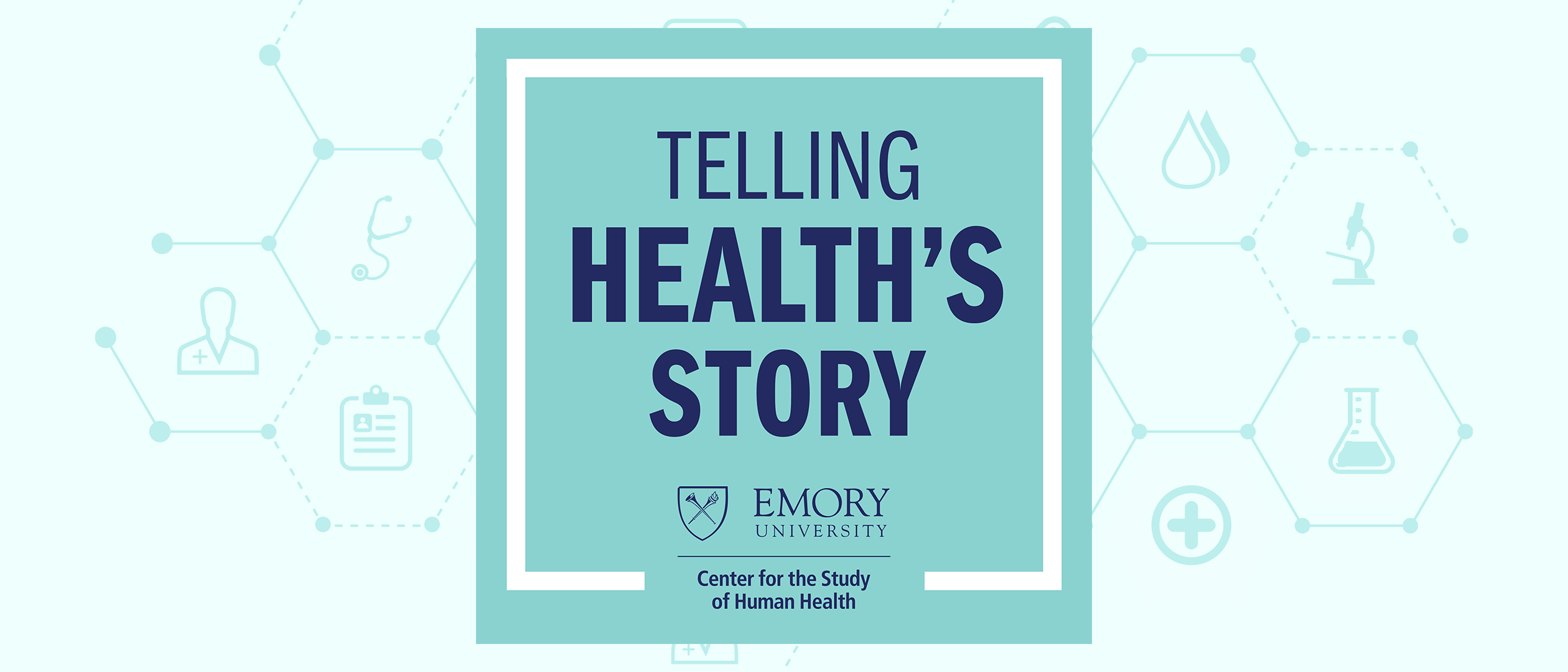Have you ever struggled with your mental health and sought answers for your problems on the internet or social media? If so, this episode is for you, as host Lauryn Palacio dives into the complex practice of self-diagnosis in psychiatry.
Op-Ed
Addressing Climate Change Could Prevent the Next Pandemic
Mikahla Gay
Taking an afternoon stroll in the Atlanta fall weather could feel much different at the end of this century, a recent study suggests. Researchers at Arizona State University project that in Atlanta, along with New York City, Los Angeles and Washington D.C., population exposure to extreme heat will increase by a factor of 13 to 30, meaning that these cities will be exposed to extreme heat at least 13 times more often by 2100. If the trends in urban development and greenhouse gas emissions caused by the use of coal, oil or gas continue throughout the 21st century, these predictions could be our reality.
Over 13 million Americans currently live in these cities that are projected to be negatively affected by extreme heat. Meanwhile, 1.15 million people, only a fraction of this massive population, have died from the COVID-19 pandemic across the world. Everyone is worried about COVID-19; meanwhile, the effects of climate change could magnify the pain of this pandemic.
Dr. Rebecca Philipsborn, a pediatrician at Grady Memorial Hospital and Assistant Director of the Emory Pediatric Global Health Track at Emory University School of Medicine studies the effects of climate change on child health. “It would be much less painful to transition to a cleaner energy economy than have something like COVID manifest again,” she said. “COVID is this big warning because climate change could have as disruptive effects that many times over.” And the United States is not alone in contributing to or feeling the effects of climate change. A global response to climate change is necessary to prevent the next devastating pandemic and improve the health of the most vulnerable populations.
COVID-19 is one example of a class of diseases called zoonoses, meaning an infectious disease that is transmitted from animals to humans. Predicting zoonotic outbreaks–from diseases including COVID-19, malaria, and Zika, among others–is a huge field of research. One group studying this relationship between climate change and the emergence of zoonotic diseases is the Los Alamos National Laboratory infectious disease and earth systems team, led by Dr. Jeanne Fair and her colleagues.
“As wildlife, animal and human populations move in response to environmental changes, so do the vectors and microbes of infectious diseases,” said Dr. Fair. A changing climate alters the environment where infectious agents and vectors thrive, causing them to inhabit new regions. The projected climate-related deaths in the US alone could make worldwide COVID-19 deaths seem miniscule, but climate change is actually helping drive the active transmission of infectious diseases. Directly addressing climate change will mitigate and slow the emergence of deadly, novel zoonotic diseases like COVID-19.
It’s no mystery why climate change is not attractive for policymakers when the initial cost is high and the benefits are not immediately visible. But the problem with hesitating to address climate change is that children and impoverished communities will be the most severely impacted. These communities are already among the most marginalized in society. Through the COVID-19 pandemic, researchers have learned that young people are more likely to transmit the virus and also may have an above average viral load. Children, along with pregnant women and people who are immunocompromised or over 65, are the populations that are most susceptible serious illness or death by zoonotic diseases, according to the CDC.
In a 2018 paper in the journal Pediatrics, Philipsborn wrote: “Globally, children are estimated to bear 88 percent of the burden of disease due to climate change.” she wrote. Climate change directly impacts the emergence of zoonotic diseases, she said, but also indirectly exacerbates diarrhea, nutritional deficiencies and other forms of malnutrition that account for the majority of preventable child deaths.
In 2015, the United Nations established the Sustainable Development Goals, a set of 17 aspirational goals for the world to make progress toward by 2030. Goal 3 of the SDGs is to strive for good health and well-being, with the second target of this goal aiming to end preventable child deaths. Climate change must be addressed to end preventable child deaths primarily because of its exacerbation of diarrhea and malnutrition.
Climate change is often a deeply politicized topic even though it is supported by science and global humanitarian organizations. Just last month, President Donald Trump and President-Elect Joe Biden answered questions regarding their climate change policy at the most recent presidential debate. Dr. Philipsborn has identified methods to depoliticize climate change in her own clinical practice at Grady Memorial Hospital in Atlanta. “If they’re asked before an encounter, do they want their doctor to talk about climate change, they may say no,” said Philipsborn. “But if the doctor talks about how they need to think about the air quality index for their own asthma management, all of a sudden it’s very relevant for them.”
One way to depoliticize climate change may be to emphasize its relevance to health and nutrition. Framing climate change in this way could help convince powerful people to support issues like reducing greenhouse gas emissions. Around the world, malnutrition and nutrient deficiencies are exacerbated by extreme heat, drought, and floods, especially in low- and middle-income countries.
Nutrition is essential for good health and well-being, the aim for goal three of the Sustainable Development Goals, but nutrition also has its own place in the SDGs. Goal two of the SDGs aspires to end hunger, achieve food security and promote sustainable agriculture. Nutrition depends on agriculture. Agriculture depends on climate. Without addressing climate change, we cannot accomplish goal two or goal three of the SGDs. Checklists aside, without addressing climate change, people, mostly children, will go hungry.
Dr. Parminder Suchdev, a pediatrician at Children’s Healthcare of Atlanta and the Associate Director of the Emory Global Health Institute, studies this intersection of nutrition and infection globally. “Some places in Africa have issues of flooding, lack of crops and climate change, so they don’t have enough food,” he said. “They have pockets of the population who are straight up starving because they don’t have enough to eat, then also have a diet that’s very limited in diversity.” Communities have tailored their agriculture and economy around the foods that thrive best in their current climate. Human activities that increase the concentration of greenhouse gases can be held partially responsible for resource scarcity in regions with a rapidly changing climate.
This was all very true before COVID-19, but the presence of any infectious disease increases the likelihood for food insecurity and malnutrition. This pattern was seen with malaria, measles and HIV/AIDS. The two-way street between infection and malnutrition is known as the double burden of malnutrition. “If you’re malnourished, it can affect your immune system and how quickly you can recover from infection, which is so telling right now with COVID,” Dr. Suchdev said. Climate change could directly and indirectly increase child deaths by malnutrition, which already accounts for 45 percent of preventable child deaths. Because climate change is so divisive, we must address climate through the lens of nutrition and the improvement of global child health to encourage leaders to act.
The most vulnerable populations will suffer the consequences of climate change due to lack of resources, but if the current trends in carbon emissions and urban development continue, the pain of climate change will radiate through even the most developed countries swiftly. Opponents of climate change action tout the high initial cost as an excuse for not addressing human-induced pollution, but unfortunately, the cost of failing to act will be much greater.
Because the acceleration of climate change is unpredictable, modeling the cost of inaction is difficult, but has been attempted by economists and NGOs such as Environmental Defense Fund. The 2020 Report for EDF summarizes the cost to state and local economies by estimating the cost of recent climate-related disasters and predicting the additional cost if the rate of disasters increases. Each degree that the average temperature increases is estimated to cost the United States $257 billion annually, roughly 1.2 percent of the Gross Domestic Product. There is no evidence that we can reverse the negative effects of climate change, only slow the rate of future warming. The initial cost to transition to a cleaner energy economy is only a fraction of what future climate-related disasters will cost the US and the world.
The science and numbers are very clear about the detriment to the US if climate change remains unaddressed. Child health, nutrition and economic advancement are the lenses that gain attention from powerful people, so if we want to address climate change, we must use these frames. Climate change will affect each of these sectors dramatically by facilitating the emergence of zoonotic diseases, exacerbation of childhood diseases such as malnutrition, and damage to soil, crops and infrastructure. To stop the next pandemic, whether it’s an infectious disease, resource scarcity or global economic recession, we must begin by addressing climate change.
Citations
Broadbent, A. M., Krayenhoff, E. S., & Georgescu, M. (2020). The motley drivers of heat and cold exposure in 21st century US cities. Proceedings of the National Academy of Sciences of the United States of America, 117(35), 21108-21117. doi:10.1073/pnas.2005492117
Lowe, M. and Marx, R. (2020) Climate Change-Fueled Weather Disasters: Costs to State and Local Economies. Datu Research. https://www.edf.org/sites/default/files/content/report-ClimateChange-FueledWeatherDisasters.pdf
Manore, C., Xu, C., Fair, J.M. (2020). Climate change is driving the expansion of zoonotic diseases. Research Outreach. doi: 10.32907/ro-114-126129
Philipsborn, R.P. and Chan, K. (2018) Climate Change and Global Child Health. Pediatrics. 141(6). https://doi.org/10.1542/peds.2017-3774
Student Highlight: Mikahla Gay graduated from Emory in May 2021 with a major in Human Health on a pre-medicine track. She is currently working as a patient transporter at Emory University Hospital alongside working as a medical scribe for Princeton Brain and Spine Neurology Clinic. She is currently applying to medical school and hopes to impact the field of medicine by increasing access and support for marginalized, underserved communities in healthcare, policy and advocacy. She wrote this op-ed for HLTH 385W in fall 2020 in her senior year.

